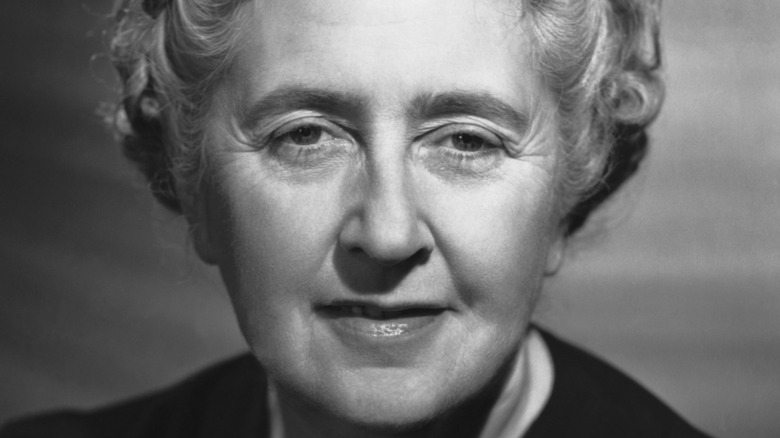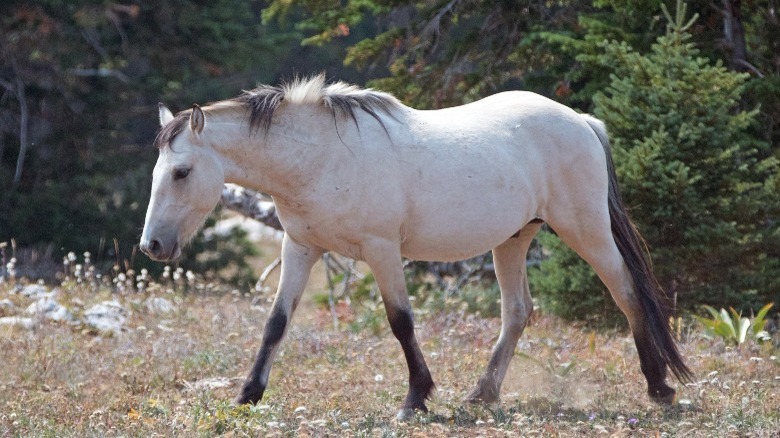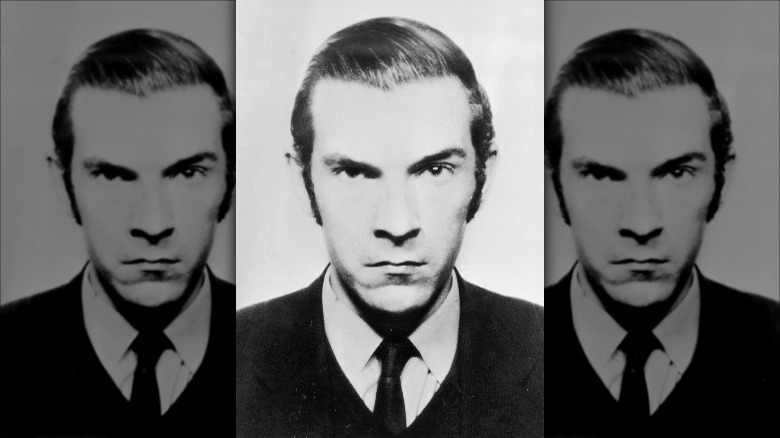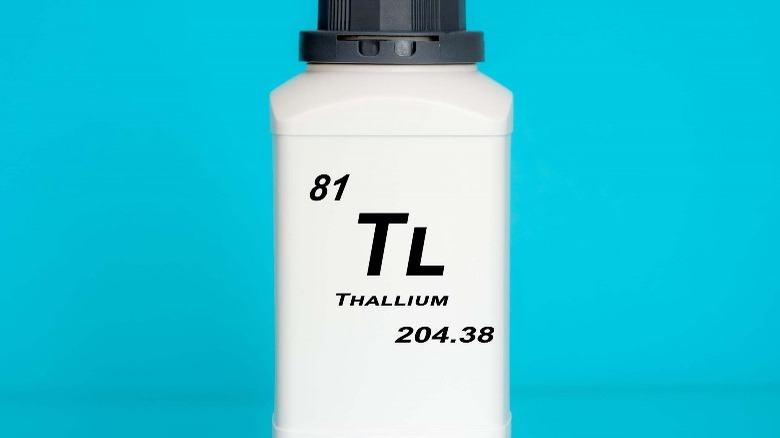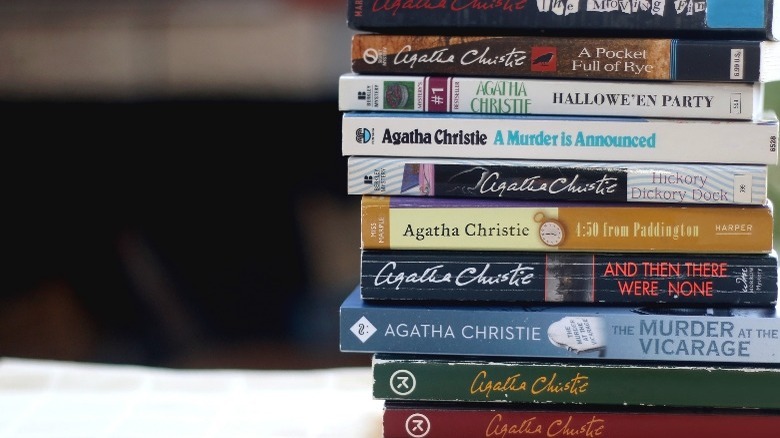Why An Agatha Christie Mystery Might Have Inspired A Real-Life Murderer
They say truth is stranger than fiction, but in England in 1962, the two lined up perfectly. A woman's mysterious death mirrored the deaths in what was then Agatha Christie's recently-published book "The Pale Horse."
The woman was Molly Young, and her 14-year-old stepson, Graham Young, soon became the prime suspect. Molly Young, along with her husband and stepdaughter, had been sick for some time. Then, in April 1962, her husband came home to find Molly in their back garden in agonizing pain. His son Graham was there, too, watching in fascination. Molly Young died later that day, and at Graham's suggestion, was cremated (via Biography).
Graham Young was interested in chemistry and had been teaching himself about various poisons, which he bought over-the-counter in drugstores, convincing the druggists he was older than his age. He brought the poisons to school to show off, and a teacher reported him. Suddenly his family's illnesses and his stepmother's death seemed much more suspicious. Young was arrested and eventually admitted to poisoning his father, sister, and a school friend, but he didn't mention his stepmother. Any proof that he'd poisoned her had been destroyed when she was cremated (via Biography). At the time — and a decade later, when Young was on trial for further crimes — "The Pale Horse" came up more than once.
Murder and The Pale Horse
Agatha Christie's novel "The Pale Horse" follows a historian, Mark Easterbrook, who becomes interested in a string of murders that may be associated with the mysterious Pale Horse Inn and three women who live there, who are rumored to be witches. Easterbrook eventually discovers that far from being killed by witchcraft, the victims have died of thallium poisoning (via Super Summary).
According to Mental Floss, thallium is a heavy metal discovered in 1861 but not widely known by the mid-20th century. It is odorless and tasteless and badly damages nerve cells. Administering small doses can kill someone within two to three weeks. The symptoms, including numbness and fatigue, have often been mistaken for encephalitis or epilepsy.
Christie's official website says "The Pale Horse" helped lead to Young's arrest when a doctor reading the book realized that the "bovingdon bug" — a mysterious ailment in Hertfordshire, England, where Young lived at the time — was actually thallium poisoning. He then reported this to Scotland Yard. However, other accounts of the crime don't include this detail.
Young's second crime spree
Young was sent to Broadmoor, an asylum for the criminally insane, for poisoning his family. However, by 1970, his doctors said he was "cured" and were advocating for his release. That was in spite of the discovery of poison in hospital staff's drinks and the garden plot of nightshade Young was growing (via Mental Floss). Learning of his possible release, Young told a psychiatric nurse he intended to kill one person for every year he had been at Broadmoor; this was put on his file but not taken seriously, according to Biography.
He left Broadmoor in February, 1971, at age 23. He got a job at the John Hadland Photographic Instrumentation warehouse; according to Mental Floss, his bosses knew he had experienced a "breakdown" but not about the real reason he was in Broadmoor. Within a month of his arrival, Hadland employees began to get sick. Young had easy access: he often made tea and coffee for his coworkers.
The aftermath of the poisoning
Young's boss, Bob Egle, was one of the victims. Egle recovered while on vacation but became sick again after returning to work. He died in July. A senior employee, Fred Biggs, came in to help because so many workers were out sick, but soon, he was also unwell. He died in November, 1971. Young noted in his journal he was annoyed it took so long.
A doctor came to the warehouse to look for toxicity in the environment and reassure workers. He became suspicious of Young after Young grilled him about the possibility of thallium poisoning. He reported this to the authorities, who looked into Young and discovered his criminal past (via Biography).
Young's guilt was clear: He had thallium on his person when he was arrested, and police found his journal, in which he recorded who he had poisoned, by how much, and the results. However, he pleaded not guilty because he wanted the hype of a trial, and the trial did in fact attract media attention. Publicly, he tried to appear sinister, and he didn't like his media nickname "the Teacup Poisoner, wanting instead to be called "the World Poisoner" (via Biography).
Young and The Pale Horse
"The Pale Horse" came up at his trial because of the rarity of thallium poisoning. A pathologist testified that Christie's book was the only non-reference source of information about it. Christie, then 81, was worried she had given Young ideas. The Daily Mail even published a story on the similarities between the book and the real-life case. However, Young himself never mentioned the book, according to Mental Floss.
He was found guilty on several charges and received four life sentences. When asked if he felt any remorse, he said, "What I feel is the emptiness of my soul." In prison on the Isle of Wight, he made friends with Moors Murderer Ian Brady, who later described Young as only being excited by power, experimentation, and death. Young died in 1990 at age 42, still a prisoner (via Biography).
His legacy lives on. In 1995, a dark comedy film was made about Young. Mental Floss notes that 10 years later, a Japanese teenager tried to poison her mother with thallium. During an investigation, the police discovered her blog, in which she documented her mother's reactions to the poison. The blog mentioned the movie about Young ... and "The Pale Horse."
